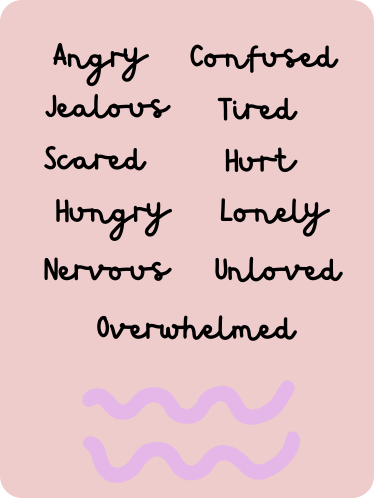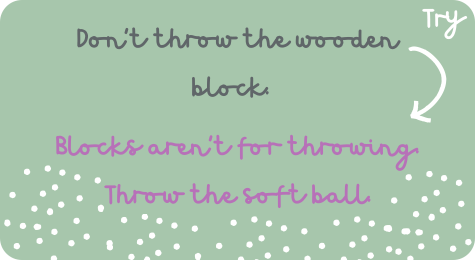Nursery is where children can grow and develop but also learn boundaries. It is natural for children to be curious and experiment with their behaviours and to test limits. During the early years, toddlers undergo neuroplasticity changes and can struggle to choose behaviours consciously. So, how can you enforce behaviour management strategies if you are unsure whether the behaviour is chosen?
In this article, we explore positive behaviour strategies, looking at EYFS behaviour policies, reasons for behaviour and examples of strategies you can try in your nursery.
Why do nurseries have behaviour policies?
Just like primary schools, nurseries will follow their own behaviour management policy. But as every child is an individual, with different experiences that can form their behaviour. Can a one-size-fits-all behaviour policy work in EYFS?
Nurseries will have behaviour policies for several different reasons:
Safety
Every child (and practitioner) should be kept safe in the nursery environment. Behaviour policies can help to set out the expected behaviours to keep children and staff safe. If a child displays extreme aggression with other children, nursery managers and owners must have outlined practices they will follow to ensure safety for all.
Bullying prevention in EYFS
Bullying behaviours can appear even in nursery settings, so it is important to safeguard children against bullying from an early age. Experiencing repeated unkind behaviours can impact a child’s confidence, willingness to make friends and enjoyment of nursery. An EYFS behaviour policy can outline examples of bullying behaviour and the setting’s protocol and re-education of the children and parents.
Staff guidance
School and nursery behaviour management strategies must be fair, considered and consistent. Consistency is a key aspect of building a trauma-informed EYFS setting. Supporting new practitioners or childcare apprentices to be consistent with positive behaviour strategies can help to define clear behaviour expectations for the children.
Parent partnerships
Strong parent partnerships help children to progress in EYFS. Most parent frustrations stem from misunderstandings of expectations (for their role and their child’s).
For example, if a parent is unaware of the nursery’s behaviour policy when their key worker explains their child is participating in restorative justice activities due to a bullying incident, they may be confused and unsure of what this consists of. Having the behaviour policy’s backup can help practitioners manage angry and irate parents in EYFS.
Encourage positive wellbeing and mental health in EYFS
Behaviour policies should not be a list of unacceptable behaviours and their associated sanctions. It is important to remember the children you are supporting are under the age of 5. Dr Charlotte Dunster-Page explains that children’s behaviour choices are rarely chosen out of manipulation. Behaviour is a communication of a need; your EYFS behaviour management policy should be sympathetic to exploring the reason for the behaviour (it may just be that they are toddlers!)
Your nursery’s behaviour management policy should highlight strategies all practitioners will use to encourage children’s Personal, Social, and Emotional Development (PSED) and wellbeing by promoting mentally healthy habits in EYFS.
What does the EYFS statutory framework say about positive behaviour strategies?
The EYFS statutory framework anticipates children working at the expected level of development in EYFS to be able to demonstrate self-regulation skills (or at least begin to display these behaviours).
- Children should understand their feelings and those of others and begin to regulate their behaviour accordingly.
- Children will be able to control their immediate impulses when appropriate and set and work towards simple goals.
- Children will be able to follow instructions set by the teacher appropriately and focus their attention.
- Children will understand the reasons for rules and try to action their behaviour in line with what is right and wrong.
- Children will form positive attachments to adults and build friendships with peers.
Relationships in the early years underpin all development and progression. For EYFS settings to model positive behaviour strategies, the children must first be in secure, trusting relationships. Strong key worker-child relationships are essential for building this attachment.
Section 3.53 in the EYFS statutory framework highlights the responsibilities a childcare provider has for managing children’s behaviour:
- A child’s well-being should be a priority when any sanctions are used for a child; corporal punishment is never permitted. Physical intervention for the safety of the child and those around them should be included in your setting’s policy and understood by the parents. You can share your important EYFS policies via your nursery software; having all useful information in one place is helpful for parents.
What are the reasons for challenging behaviour in toddlers?
The first important reason to remember is that they are under 5. Their emotional literacy levels are in their infancy. Much like when teenagers undergo neuroplasticity changes in adolescence, toddlers experience a huge brain development stage during their early years, making their behaviour unpredictable and often challenging.
Dr Dunster-Page, a Clinical Psychologist, recognises the different influencers for PSED EYFS growth (and delay). These include experiencing trauma, neurodiversity, Adverse Childhood Experiences and stressful events.
All behaviour communicates a need for increased PSED intervention, attachment development, or basic needs (like hunger, thirst or sleep). Your nursery’s behaviour management system should aim to identify behaviour patterns through regular online observations. Stored in the child’s own online learning journal, trends and collaborative practices can be identified by nursery staff.
A child may be feeling:

What are positive behaviour management strategies?
Your EYFS setting may have two approaches to managing challenging behaviour in the nursery: Distraction and diversion (to diffuse the immediate behaviours). Additional learning and support to develop positive strategies for long-term impact.
Aiming to ‘fix’ the challenging behaviour whilst the child is still highly dysregulated is ineffective. As with adults, we first must regulate to reflect and learn from behaviours. Regularly implementing PSED EYFS activities throughout your nursery curriculum can help children identify and understand emotions and their causes.
Positive behaviour management strategies are when a school or nursery focuses on relationship building, listening to the communication and promoting healthy and positive behaviour choices rather than sanctioning undesirable behaviour in toddlers.
Your EYFS setting’s philosophy for learning will underpin positive strategies, including:
- Encouraging a safe environment for all children.
- Promoting and modelling respect for all.
- Listening to and recognising other’s opinions and views (included in EYFS British Values).
- Building positive and secure relationships between adults and children.
Examples of positive behaviour management strategies for nurseries
Positive behaviour language for EYFS
Language choices are important for including children with speech, language and communication needs (SLCN) and supporting SEND children in EYFS. Language is the golden thread for relationship building; ensuring consistency with spoken language and consequential actions helps to build trust and boundary expectations.

Group rewards and goals
When promoting positive and collaborative behaviours, encourage teamwork with group rewards and common goals. For example, when helping to tidy up the nursery, it is helpful to encourage all children to participate to achieve the central goal. Building social skills and helping to forge group friendships and unity is beneficial in making children feel like they belong within a community.
When aggression occurs
If a child becomes physically or verbally aggressive to another child or practitioner, your staff must be confident in their approach. Drawing on the knowledge that behaviour is communication, trends of triggers and reasons for the behaviour must be evaluated as a staff team afterwards, logging all information to build a bigger picture.
In the immediate instance, the safety and well-being of all children is paramount. Having multiple adults jump in to defuse the incident can often heighten a child’s emotions, remain calm and use simple instructions for the child to follow. If another child is in danger of being hurt, you may want to calmly remove them from the situation.
If a child becomes emotionally dysregulated in the extreme, it can be helpful to consider ‘changing faces’ regularly. Swapping out the member of staff supporting can allow for new conversation topics and reduce the intensity of the emotion. Your staff may use walkie-talkies if your childcare setting is large; calmly asking for support or a change of face can help to defuse the extreme dysregulation incident.
Preparation, preparation, preparation
Humans don’t like change. More often than not, humans prefer to be in the know. Excluding nice surprises, the unknown can be scary, especially for a toddler who is only 3-5 years old. Preparation for changes can allow positive behaviour management strategies to work effectively. You may want to discuss the areas of change and transition children experience in your setting during your next staff meeting to identify where increased preparation for transition could benefit.
Some ideas to consider:
- The change of staff from day to day (especially for part-time staff).
- Alterations to the usual daily routine.
- Transitioning to primary school.
- Introducing a new child into the nursery room.
- The changing of the environment, including role-play areas.
- A favourite friend going on holiday.
How can Blossom help?
Blossom Educational’s nursery software is created by EYFS practitioners for EYFS practitioners. Making everyday tasks simple, Blossom has features to support practitioner observations, parent communication and occupancy planning.
Contact one of our friendly customer service team for a no-strings chat about a package that will suit your budget, size and priorities.
Subscribe to receive expert advice and tips from seasoned professionals in the early years sector.